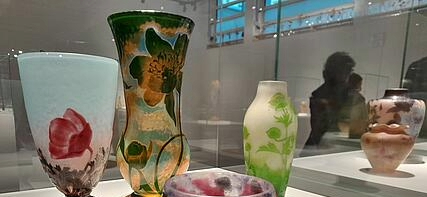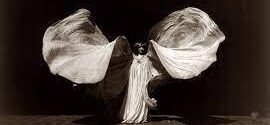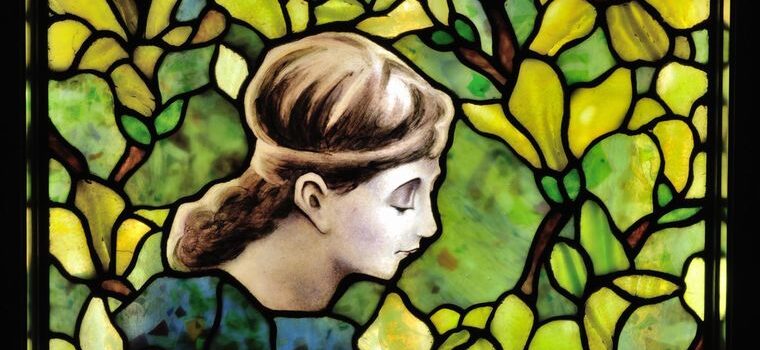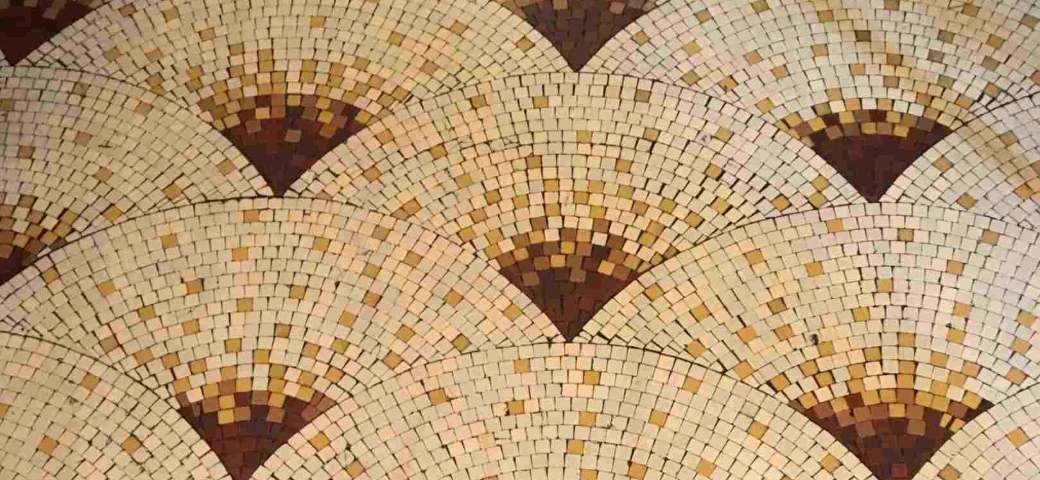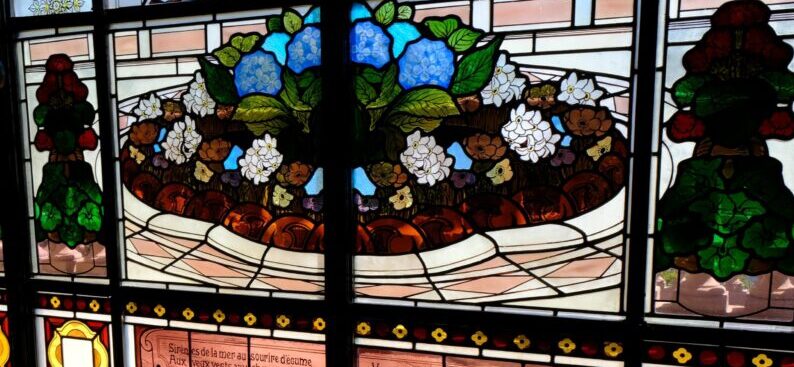Art Nouveau remains an indispensable field of study for every contemporary designer and interior decorator, not merely as a historical footnote but as a dynamic toolkit of revolutionary philosophical principles, pioneering methods for integrating arts and industry, and a direct ancestor to modern architectural and communication forms, offering essential lessons in aesthetic coherence, structural honesty, and the formation of a vocabulary perfectly suited for the modern world. The comprehensive study of this epoch provides a crucial understanding of how to manage the total design environment, moving far beyond surface ornamentation to the very roots of design philosophy.
This deep dive into Art Nouveau reveals the critical moment when designers consciously sought a definitive and permanent break from 19th-century eclecticism and the tiresome revivalism of historicism, leading to the establishment of the Principles of Modernity and Anti-Historicism. It was a conscious push for a New Architecture for Modern Life, with revolutionary figures like Otto Wagner explicitly asserting that the sole valid starting point for artistic creation must be modern life itself, declaring that “all else is archaeology” in a powerful dismissal of past styles. This philosophical position was the engine that drove the search for a truly “new style” appropriate for the rapidly expanding, technologically advanced “modern metropolis,” establishing a Shift in Architectural Thought that forever changed the discipline. Wagner’s influential 1895 text, Moderne Architektur, is rightly regarded as “one of a handful of books in the literature of architecture” that “presaged a revolution” and served as the “first modern writing to make a definite break with the past,” a fundamental text for any contemporary designer seeking to understand the lineage of modernism. This drive was encapsulated in the uncompromising mantra of the Vienna Secession artists: “Give our time its art, to art its freedom,” reflecting a universal Spirit of the Age across Europe to bring art once more into direct, meaningful contact with daily life, rather than confining it to galleries and museums—a primary goal for today’s experiential retail and residential designers.
At the heart of Art Nouveau’s practical lesson lies The Ideal of the Total Work of Art (Gesamtkunstwerk), a concept of integrating all elements of design into a cohesive, unified whole that is absolutely vital for contemporary practice, which increasingly demands holistic branding, immersive environmental design, and signature aesthetics. The pursuit of a Unified Aesthetic meant designing the entire building as a single entity, seamlessly uniting the architecture with sculpture, the ornamental arts, and industrial design, such that in this rigorous framework, rooms, series of rooms, and even whole villas were subjected to a uniform artistic concept where all details were intentionally “in harmony with one another.” This required Complete Artistic Control, exemplified by masters like Victor Horta in Brussels, who pushed this principle to its limits, meticulously designing every single aspect of the interior decoration, fixtures, and furnishings for buildings such as the Hôtel Solvay, demonstrating that true aesthetic harmony is determined by this unwavering commitment to coherence, a direct challenge to modern designers often forced to compromise with pre-fabricated or disparate elements. For decorators, this approach teaches how to achieve a signature look that is deeply integrated, rather than merely accessorized.
The movement’s enduring value is further solidified by its radical Innovation in Form, Structure, and Materials, providing a practical template for how to incorporate new technology and industrial methods with profound aesthetic purpose, a critical skill in today’s rapid material innovation landscape. Influenced heavily by the structural rationalism of Eugène Viollet-le-Duc, Art Nouveau architects demanded Structural Honesty, meaning the construction materials themselves, especially newly available steel and iron and their connecting rivets, had to remain visible and expressive; furthermore, ornamentation was tasked with the higher purpose of highlighting and following the structural logic of the building, not masking it. This approach provided a foundation for the entire 20th century’s structural expression. The style was profoundly and successfully influenced by new materials and techniques, such as the widespread adoption of Roman cement (a natural cement patented in 1796) whose fast setting time and color mimicked natural stone, making it uniquely ideal for the prefabricated cast ornaments and intricate moldings so prevalent on façades. This marked an early industrialization of high-design components. There was also a significant, revolutionary Surface Aesthetic and Function shift around 1900, with architects seeking to display the natural visual quality of plaster, polished wood, glass, and other materials without obscuring them beneath layers of paint. Otto Wagner’s iconic Post Office Savings Bank in Vienna stands as a textbook example, where its white square marble tiles are not mortared but attached with symbolic aluminum bolts and nuts, demonstrating how cladding can perform not just a protective function but a powerful visual and symbolic one, representing the very essence of modern, rational construction.
Crucially, Art Nouveau provides a Direct Precedent for Contemporary Design, as its formal language continues to influence digital, parametrically-driven, and curvilinear architecture today, essentially acting as a timeless “formal library” for contemporary creatives. The movement’s deep reliance on Curvilinear Geometry and Computational Design predecessors—dynamic, undulating forms, including the “whiplash curve” based on botanical splines and intricate counter-curves—offers a rich resource. The meticulous study of these highly detailed shapes, which stylize nature into pure form, provides a valuable foundational library for designers working with modern computational modeling tools. This historic use of Abstract Forms and Disorientation also finds direct parallels in contemporary computational architecture, which often creates spaces designed to produce effects of disorientation, or employs curves “without apparent endings” in a digital environment, echoing the psychological and formal effects sought by earlier Art Nouveau masters. Moreover, the style’s focus on Architectural Storytelling—the intention of architecture to communicate its philosophy or narrative to its recipient—remains utterly relevant. Understanding how Art Nouveau conveyed its values (e.g., through potent symbolism or narrative elements, like the use of the facade in the Vienna Secession building to clearly reflect the underlying function with its stark simplicity and decorative lettering) is a masterclass in modern “architectural branding” and the creation of places that resonate with purpose.
Finally, the Influence on Applied Arts, Graphics, and Commercial Practice is where Art Nouveau’s lesson hits closest to the commercial reality of interior design and decoration. The style was spectacularly successful in bridging the notorious gap between fine art and mass market application—a central and constant goal for every commercial designer today. The style’s widespread success was greatly attributable to the enormous presence and commercial distribution of professional art magazines and revues (such as Jugend in Germany, lending the movement the name Jugendstil), which ensured International Dissemination and Branding far surpassing prior styles. This rapid acceptance led to a successful Design for Commerce and Consumption, as the “modern aesthetic” was quickly adopted by manufacturers for consumer goods across the spectrum, from wallpaper, lighting fixtures, and sanitary items to commercial shop displays and furniture, allowing the growing bourgeoisie to participate in high style. Designers, notably those of the Nancy School in France, explicitly aimed to produce an “art for all,” successfully showcasing objects produced in series alongside unique pieces, demonstrating an early model for today’s tiered design offerings. Most significantly, Art Nouveau artists were pioneers in Pioneering Graphic Design, focusing intensely on typography, poster design, and layout, ensuring that the lettering and pictorial designs were perfectly harmonized. New typefaces, like those by Eckmann, were conceived to be easily translated into different materials, such as sheet metal used for lettering on buildings or stained glass, demonstrating one of the first effective principles of cross-media design and corporate identity—a foundational skill for any designer managing a multi-faceted project today. The movement, therefore, is not a decorative style to copy, but a revolutionary mindset to adopt.
For those inspired by the elegance of Art Nouveau and eager to explore its enduring influence, our website offers a wealth of resources. Dive deeper into the movement’s history, uncover hidden gems in European cities, and stay updated with the latest news and events. Whether you’re planning a visit or simply seeking inspiration, our curated Art Nouveau private tours and experiences bring the spirit of the era to life—guiding you through the architectural masterpieces and artistic treasures that continue to captivate. Explore our city guides and news to begin your journey into this timeless world of beauty.

